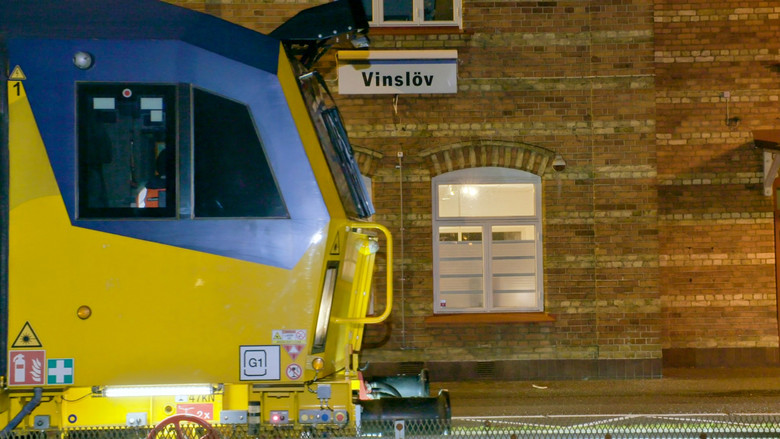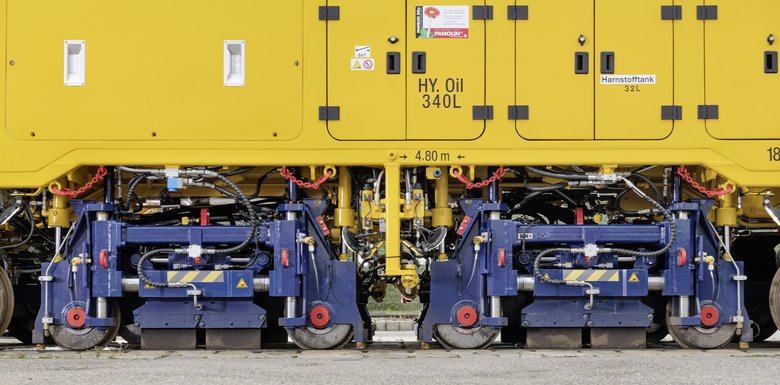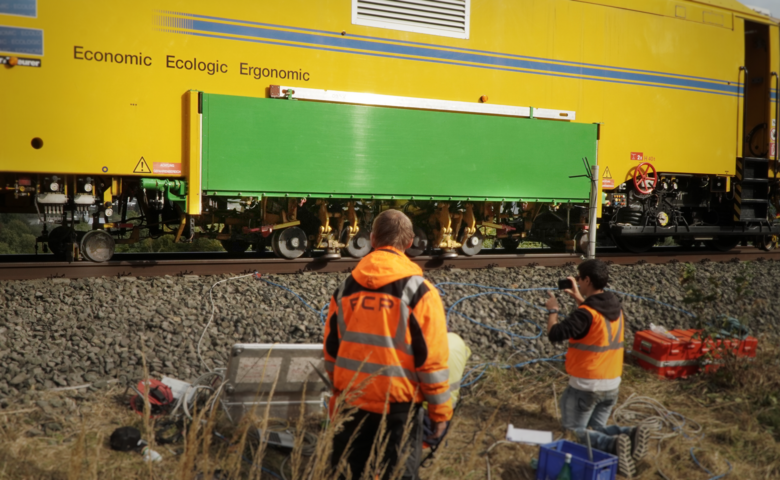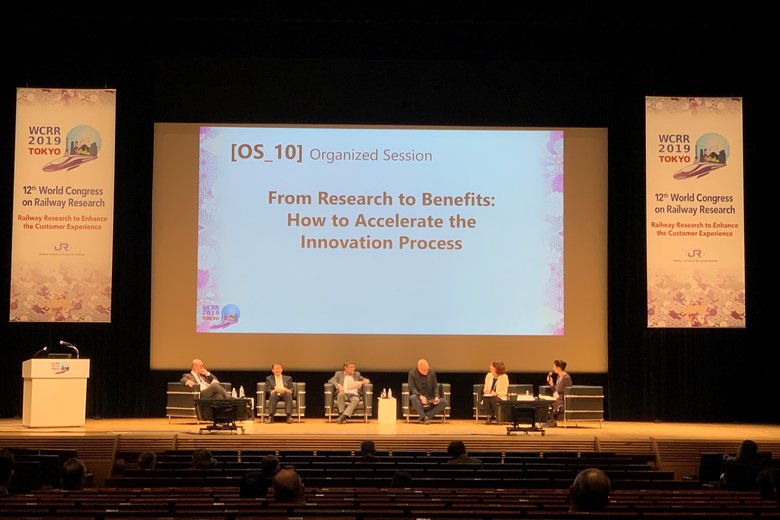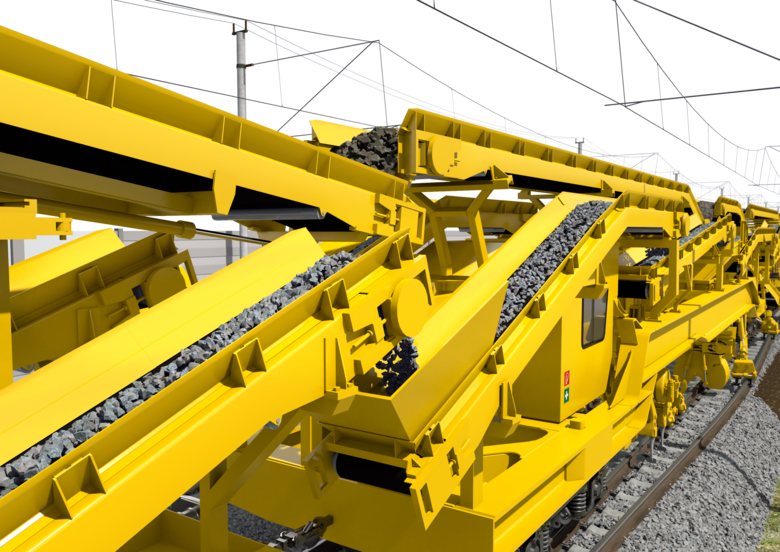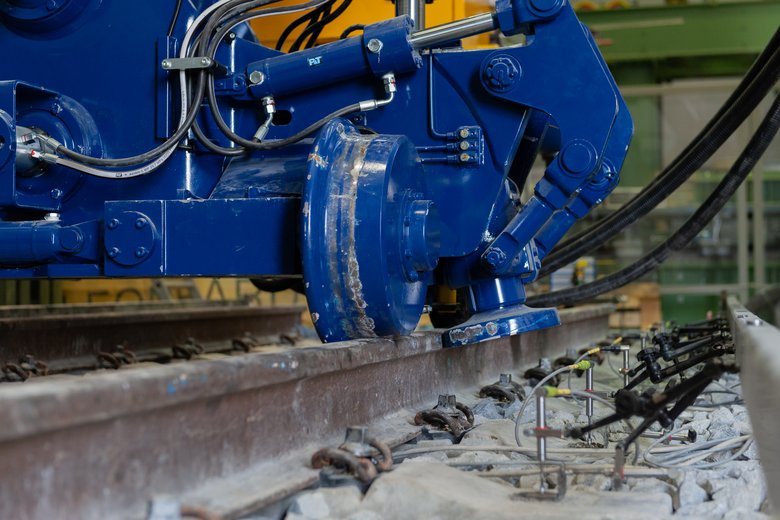- Rail roughness: emission values decrease by up to 15 dB in the relevant frequency range
- Noise: reduced by 4 to 8 dB in the relevant frequency range
- Vibrations: reduced by up to 50%
Rail grinding reduces noise emissions caused by trams
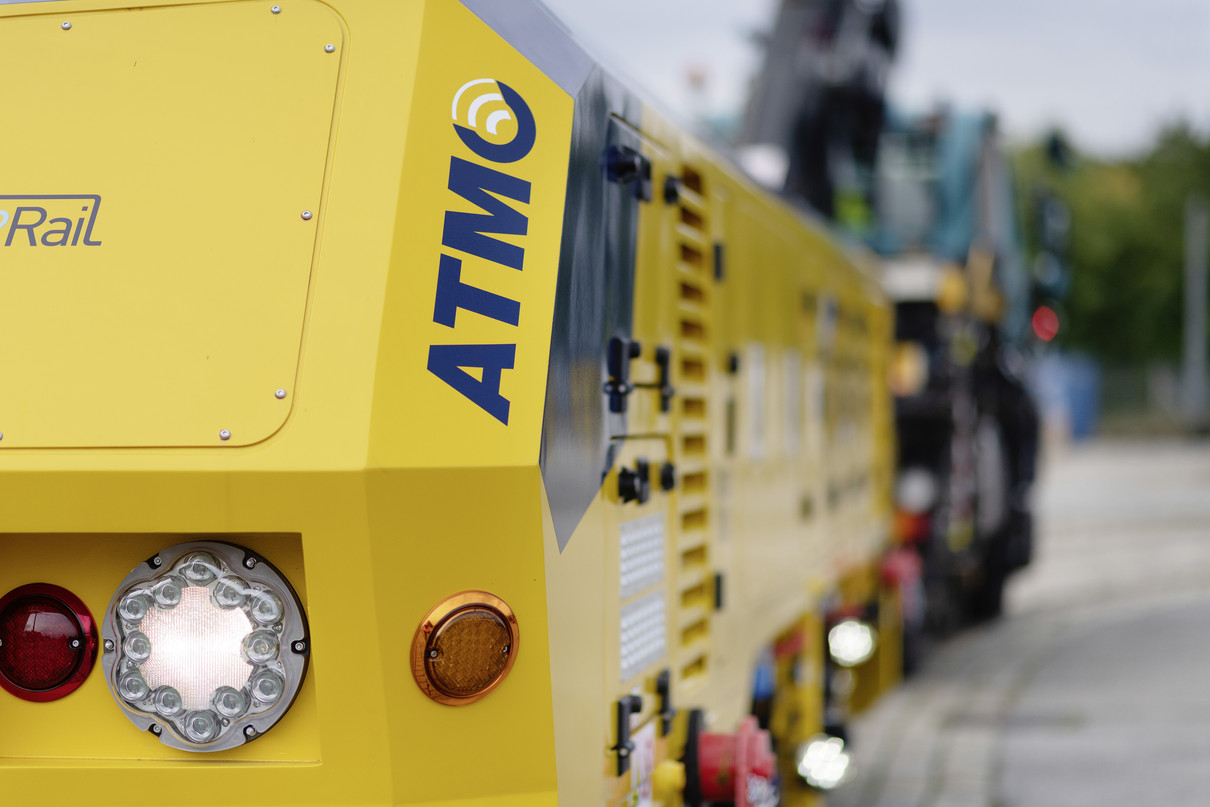
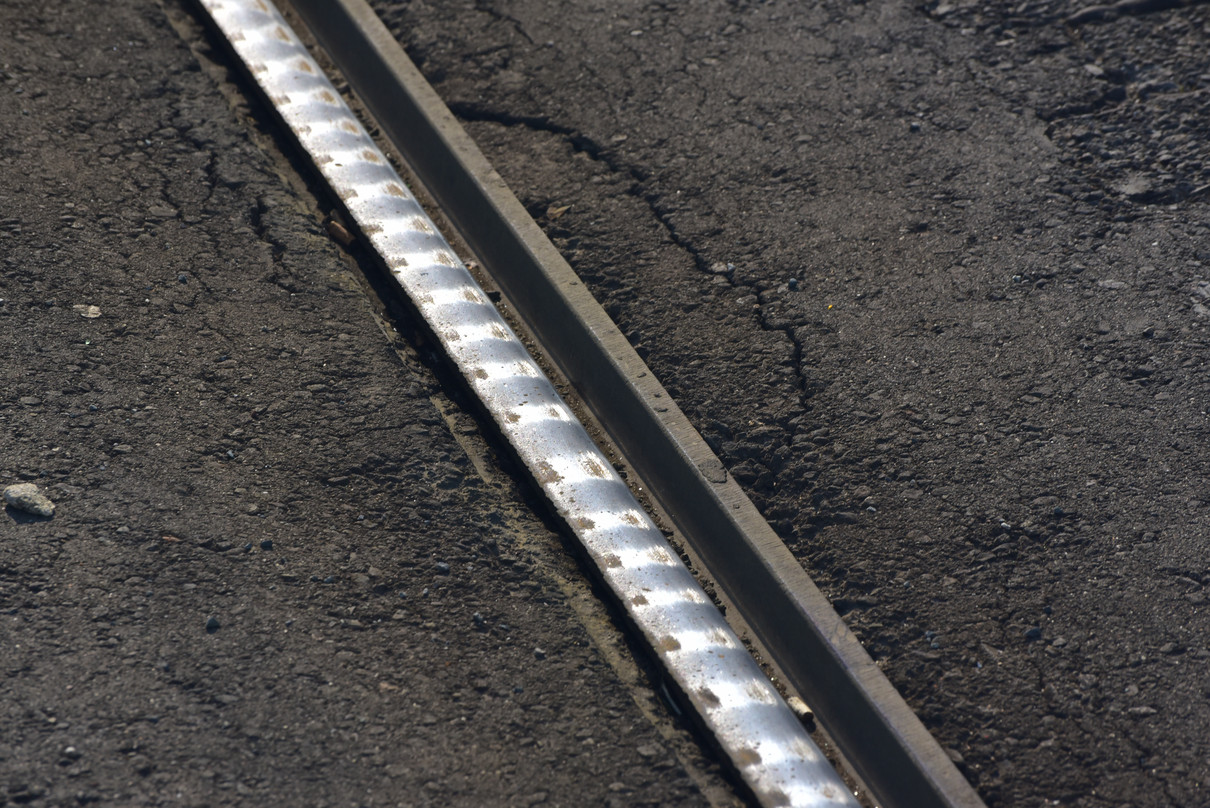
Wave-shaped irregularities, such as slip corrugations in curved track or corrugations in places where many vehicles accelerate or brake, contribute to noise generation.
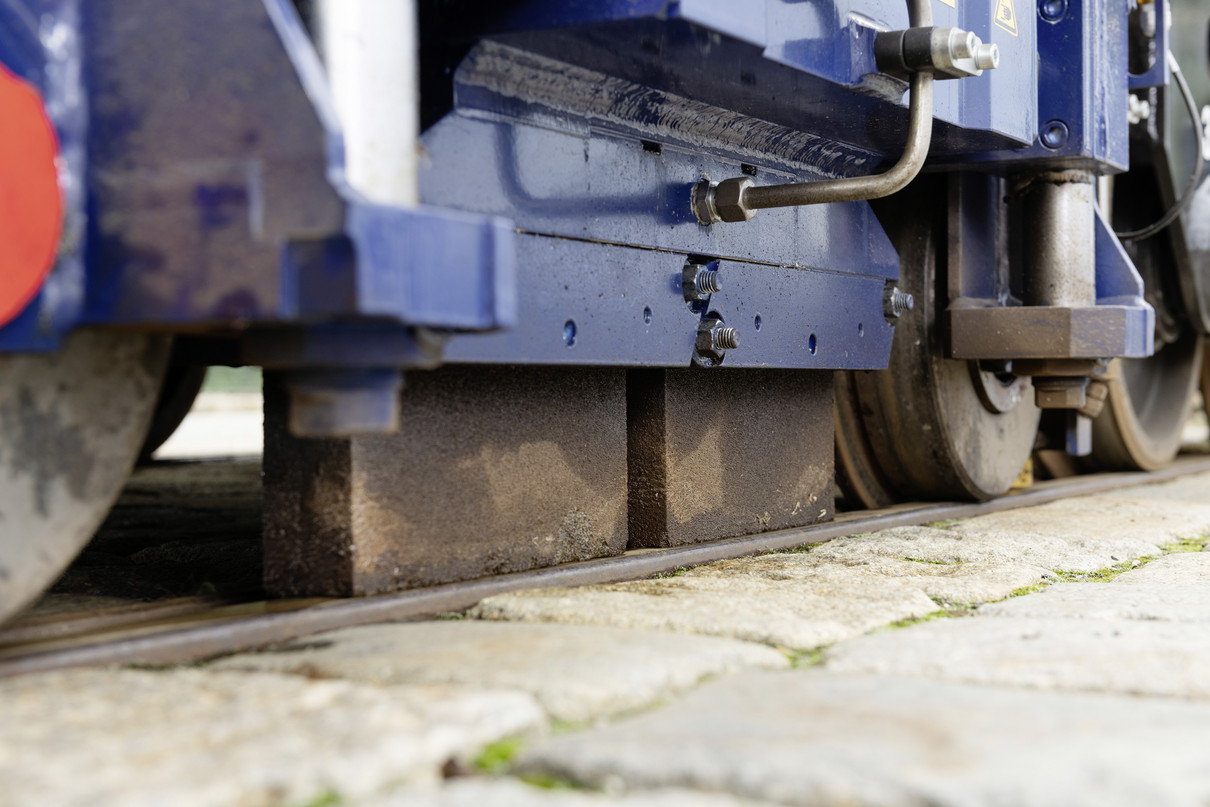
Regular rail grinding is a decisive measure to reduce noise levels.
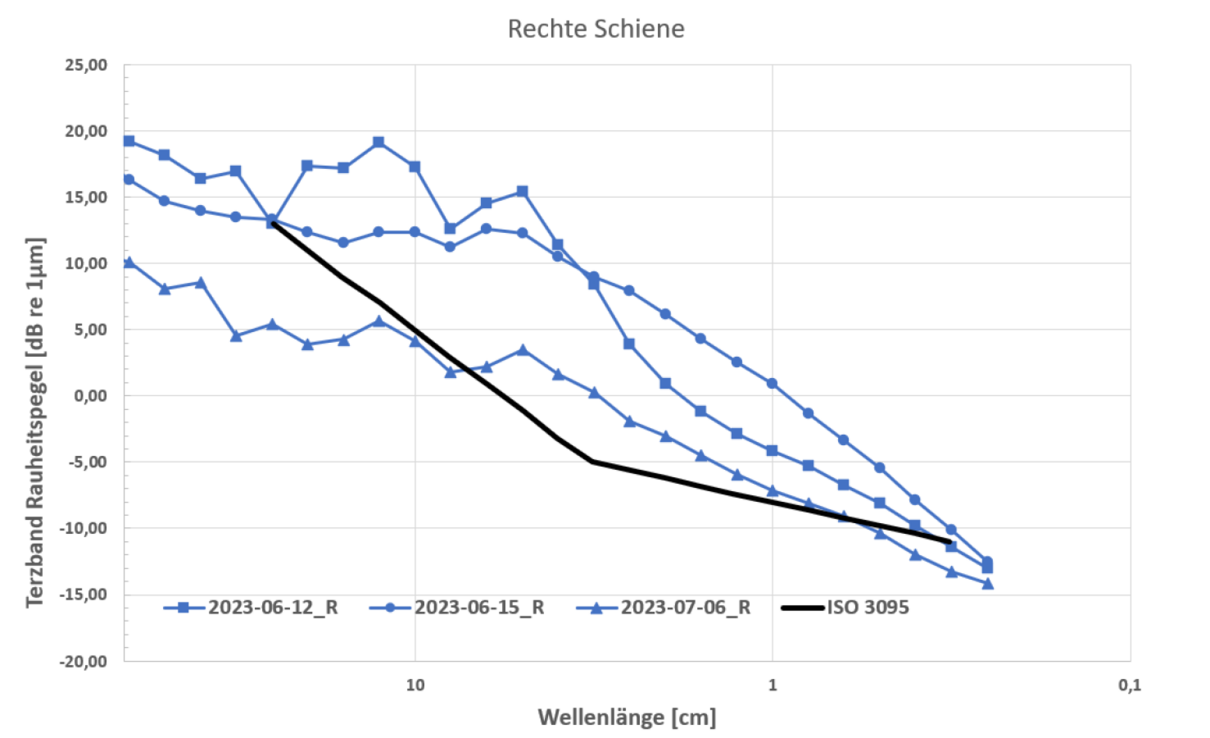
Acoustic rail roughness was significantly improved thanks to grinding.
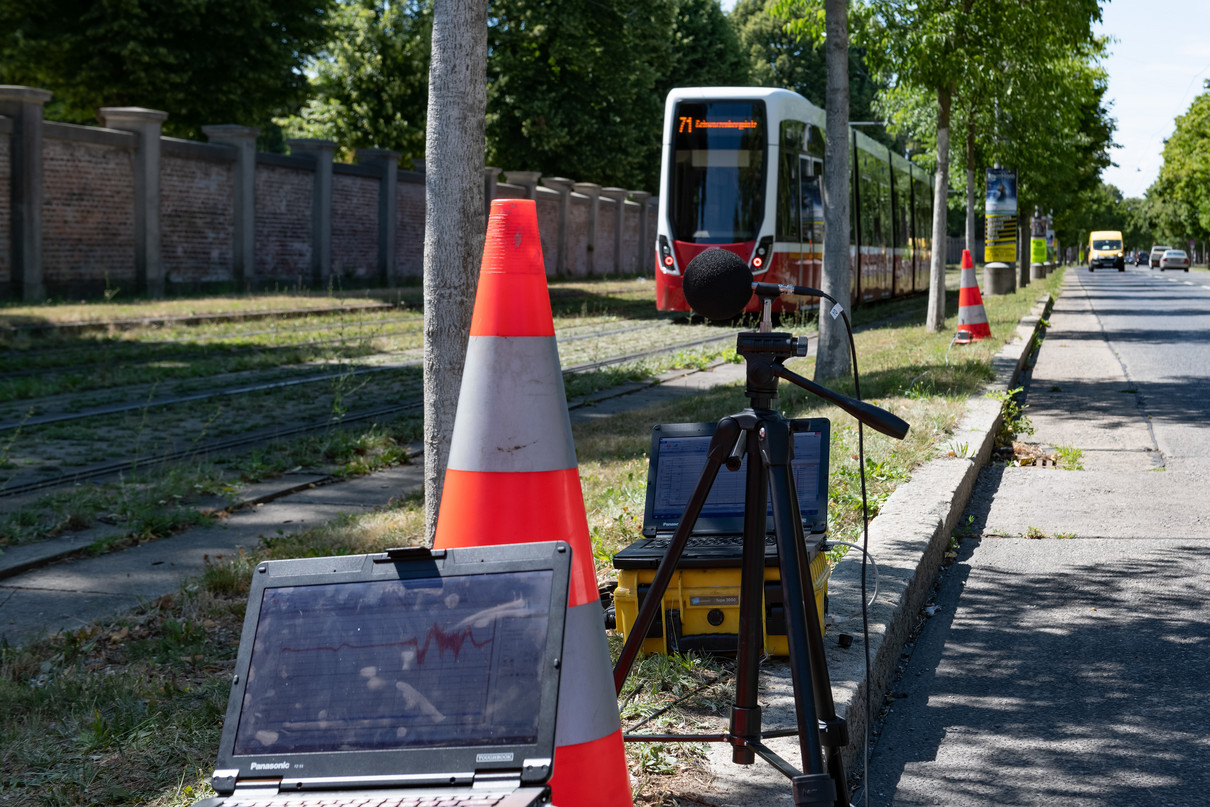
The direct airborne sound was measured at a distance of 4.5 m from the track centreline.
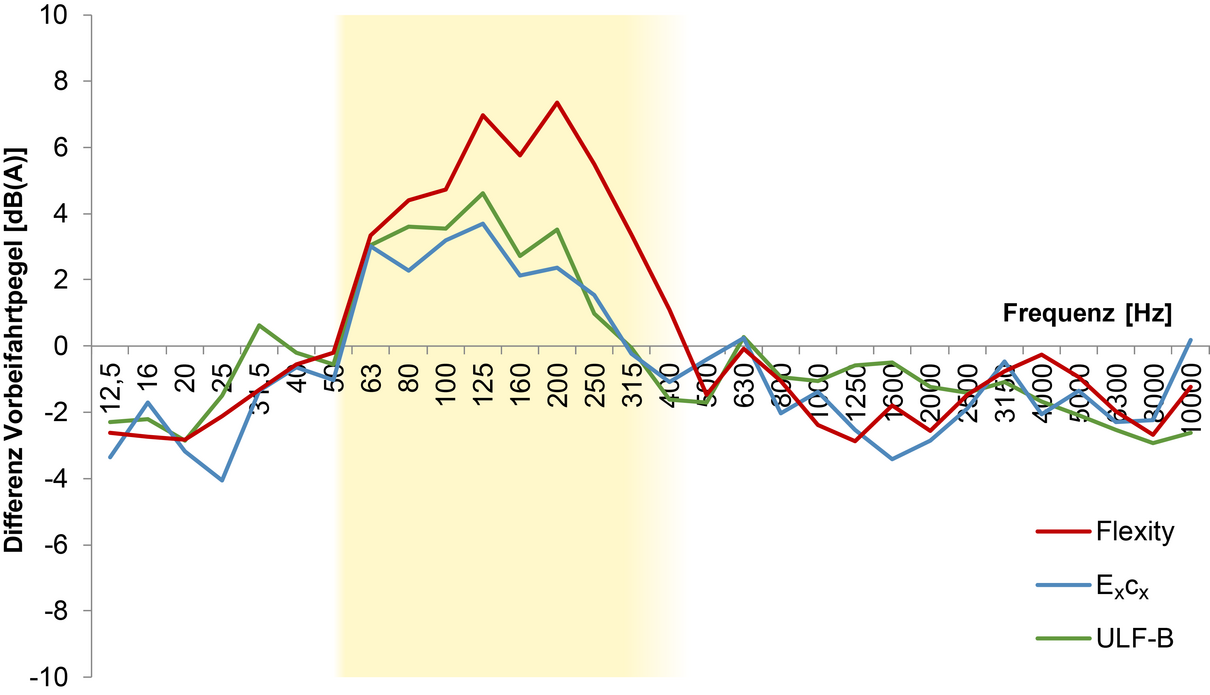
Comparison of the difference in the noise level of passing trams between the measurements before grinding and three weeks after grinding. Positive values indicate improvement. Noise emissions in the low-frequency to medium-frequency range up to approx. 300 Hz (shaded yellow) were significantly reduced. Only minor changes can be detected in the higher-frequency range.
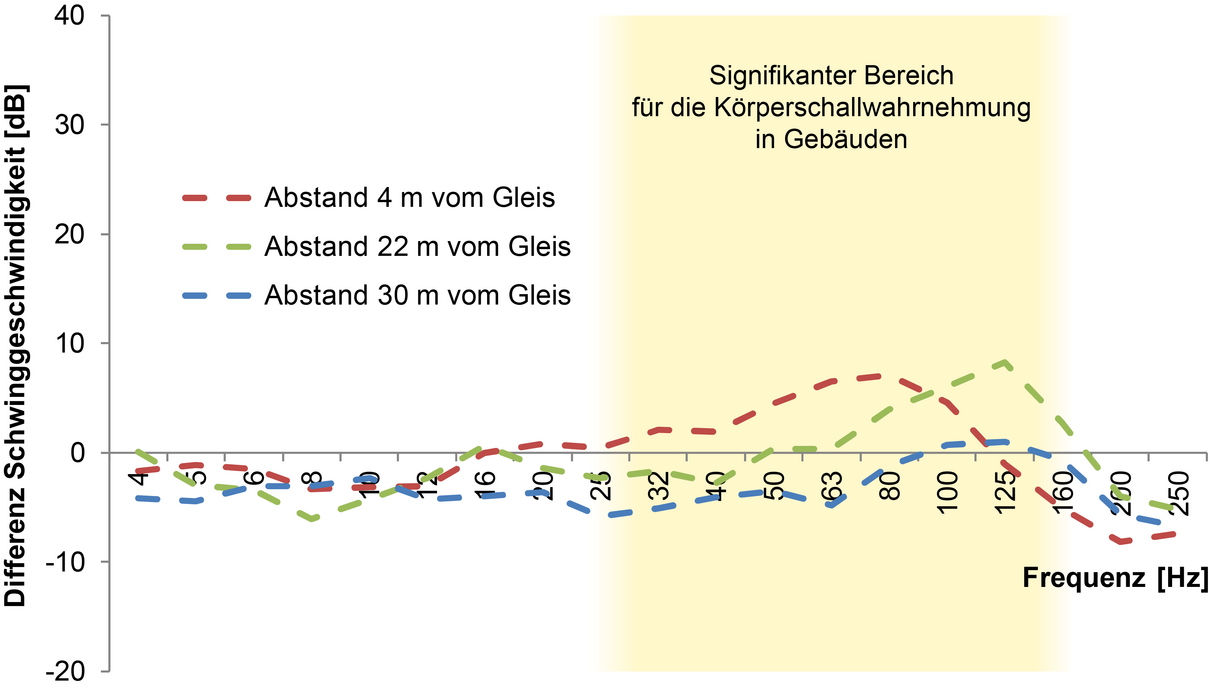
Comparison of the difference in vibration velocity of all tram types between the measurements before grinding and three weeks after grinding. Positive values indicate improvement. In the higher frequency range (50 to 125 Hz), a significant reduction in vibrations can be observed at a distance of 4 m and 22 m from the track.
Research partners
The ATMO (Automatic Track Machine Oscillator) rail grinding trailer has been in use at Wiener Linien for some time as part of a research project. Time to take stock. To what extent can tram emissions such as noise and vibration be reduced thanks to rail grinding?
Measurements show that acoustic grinding and preventive rail grinding help to reduce unwanted noise and vibrations in the immediate vicinity.
Trams in Vienna are an indispensable part of the public transport system, but they also cause noise emissions and vibrations due to irregularities of wheels and rails. Regular rail grinding is proving to be a decisive measure for reducing noise levels and relieving the burden on lineside residents. A smoother rail profile results in less noise generation and fewer vibrations to the rail superstructure and adjacent buildings. The Plasser ATMO combines two working methods: classic grinding with grinding stones and oscillating grinding.
What are the benefits of rail grinding in terms of noise reduction?
In order to objectively determine the effectiveness of rail grinding for the purpose of noise reduction, Wiener Linien commissioned measurements of acoustic rail roughness, airborne noise levels, and vibrations. Measurements were taken in the vicinity of the Vienna Central Cemetery in Simmering on three days: before rail grinding, the day immediately after grinding, and three weeks later. How much did the measured parameters improve?
Acoustic rail roughness:
rail roughness is an important factor in the generation of noise emissions. Irregularities of wheels, braking manoeuvres, soiling, negotiating curves, ageing, and other factors cause damage to the rail surface. Rail grinding usually removes these types of damage. It leaves behind a grinding pattern that is also rough, but wears off over time.
Irregularities of the running table were examined using a roughness measuring instrument that mechanically scans the rail and creates a longitudinal profile of the surface. After a break-in period of several weeks, measurements showed a lower roughness of up to 15 dB compared to measurements before grinding. The assessment was carried out in accordance with the ISO 3095 standard.
Noise emissions:
these vary depending on the train type. Old Excx high-floor trams generate the highest noise emissions due to their design, while ULF (Ultra Low Floor) low-floor trains are the quietest. Type D vehicles (Flexity Vienna) are in between.
The noise level of passing trams was noticeably reduced after grinding. After a break-in period of three weeks, a reduction in noise emissions in the lower frequency range (up to around 300 Hz) was observed. This was up to 8 dB(A) for Flexity vehicles and up to 4 dB(A) for Excx and ULF ones.
Vibrations:
these were measured at three different distances from the track using vibration velocity sensors. A comparison of the measurement series shows that vibrations near the track could be reduced by around 50% thanks to grinding. This trend decreases with increasing distance; 30 m from the track the reduction is only around 10%.
Vibrations caused by passing trains: the maximum resulting vibration velocity at the respective measuring points (4, 22, and 30 m distance from the track) is significantly reduced thanks to rail grinding, especially in the frequency spectrum that is predominant for structure-borne sound perception in adjacent buildings.



